A Visual History Of Gaming Hardware Revisions

This feature was originally published July 8, 2016.
In June, both PlayStation and Xbox announced new consoles. We know that the Xbox Scorpio is a new system meant to be less of a generational leap, and more like a revision to the Xbox One. While we don't know for sure what the PlayStation Neo is, it has been heavily implied that it is also a system that's intended to be more of a revision than a next-generation system. Not much has been revealed aside from the fact that they aren't releasing this year (though Xbox One is getting a slimmer, more powerful S model in the meantime), but we do know that the consoles focus on delivering a performance boost.
Consoles have recevied revisions and upgrades since the early days of the hobby. From the NES going top-loading and the Genesis becoming a Frankenstein monster-like creation with hardware add-ons to the more cosmetic revisions of last generation, here are the ways our favorite systems in history evolved over the course of their lifetimes.
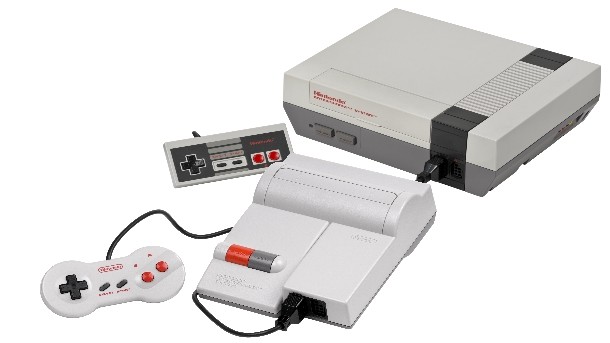
Nintendo Entertainment System
The Nintendo Entertainment System we received in the U.S. in 1985 is essentially a revision of the Japanese Famicom system, but even that front-loading console many of us played earned a revision late in the NES's cycle. Released in 1993 (two years after the SNES hit U.S. stores), the NES-101 model featured a new top-loading design and a controller similar to that of the NES's successor. The key selling point for the top-loader, however, was the price-point. Priced at just $49.99, gaming's cost-of-entry was lower than it had ever been. Even the NES-101 received small revisions during its short lifespan, swapping out different video-out components and circuit boards.

Sega Genesis
Sega Genesis, which released in 1989, was a revolutionary system that not only found solid footing in the early '90s, but even rose to be the first legitimate Nintendo rival. The console also was held onto and dragged through monstrous transformations for too many years. Model 2 hit in 1994, changing up the system's look and removing several of the ports including the RF port to allow for compatibility with more televisions and the headphone jack. In 1998 (yes, 1998 – two years after the Nintendo 64 released), the Genesis 3 was manufactured by Majesco. The smallest version of the console changed little about the Model 2 in its function (though it lost the ability to work with the Sega CD and 32X), but shrunk the size significantly.
While Sega changed small things about the performance of the Genesis over the course of its three models, it added performance boosts through add-on consoles. The Sega CD released in 1992, adding a CD-ROM drive and boosting the RAM and computer power of the Genesis. The 32X was originally thought of as a new standalone console, but was later changed to be an add-on that upped the Genesis' performance. Both of these add-ons failed to capture an audience and were discontinued in the lead-up to Sega's next console, the Saturn.
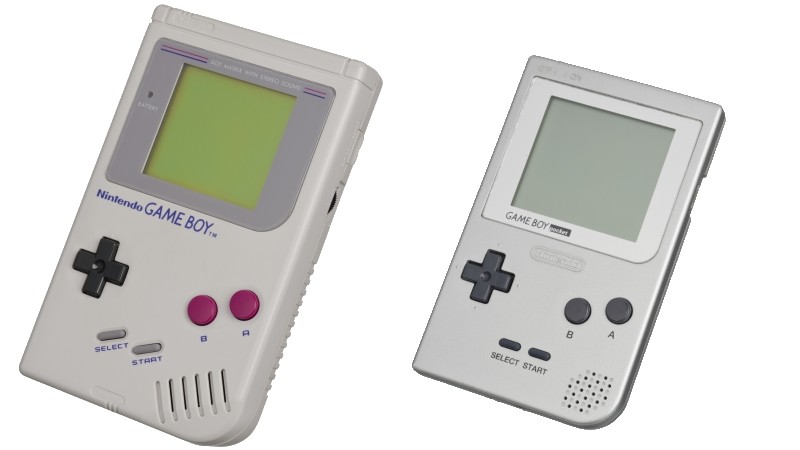
Game Boy
The original Game Boy handheld system released in 1989 and is indisputably one of the most classic and important systems ever released. Unfortunately, it was also a brick – something that's less than ideal for a portable system. That's why the revisions to the handheld made more sense than perhaps any other system on this list. The Game Boy Pocket hit shelves in 1996 and cut the size down substantially. It also sliced the number of AAA batteries it required in half (from four to two) and changed the color scheme to be true black-and-white rather than the yellow-based monochromatic scheme of the original. In 1997, Nintendo released a revised Game Boy Pocket with multiple color options and a requested battery indicator light. In 1998, Nintendo launched the Game Boy Light, a slightly larger version of the Game Boy Pocket that included a backlight, exclusively in Japan. By the time it released in Japan, however, Nintendo was already ramping up to launch the Game Boy Color, the Game Boy's first true successor.

Super Nintendo Entertainment System
Despite being a solid piece of hardware that has withstood the test of time, the SNES still received a hardware revision several years after its release. Much in the way that Nintendo extended the life of the NES with the affordable top-loading NES-101 in 1993, it released the SNS-101 in 1997. While many of the changes for the SNS-101 were cosmetic, the lightweight nature of the system and the lower price-point ($99.99) made it an ideal entry point for potential gamers.
On the next page, Sony enters the ring, while Nintendo begins heavy iterations on its handhelds.
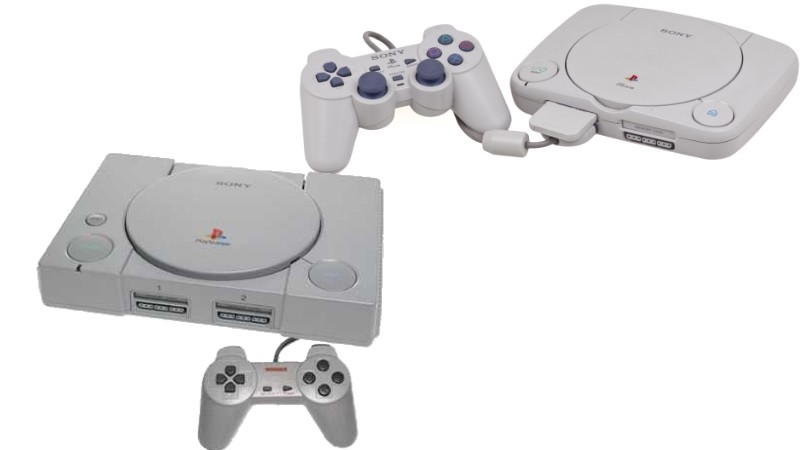
PlayStation
Sony's original PlayStation launched in 1995, but over the course of its lifecycle, Sony swapped out parts and changed the ports that appeared on the back of the system frequently to the tune of nearly 30 retail models from its launch to its discontinuation. In 1997, Sony revamped its controller to add two analog sticks and vibration feedback with the first DualShock gamepad. However, it wasn't until 2000 that Sony completely revised the PlayStation system with its PS One model. As with most revisions, the PS One was smaller than the original PlayStation, but it did more than shrink Sony's first console. The PS One removed several ports from the back of the system as well as the reset button, modified the user interface for things like memory card management, and added further protection against modchips. In addition, Sony released an LCD screen attachment that worked with the PS One so that players could game without an external TV.

Nintendo 64
While 1996's Nintendo 64 didn't receive any major revisions aside from colors and game-themed models, Nintendo increased the power of its beloved system through the Expansion Pak in 1998. The Expansion Pak is an add-on that boosted the N64's RAM from 4 MB to 8 MB. Since the 64DD disc drive attachment failed to make it to the United States, the Expansion Pak was the only way for Nintendo to significantly revise the capabilities of its system. While even the fledgling add-on fizzled out before long, it sold relatively well thanks to its role in running games like Donkey Kong 64, The Legend of Zelda: Majora's Mask, and Perfect Dark.

Game Boy Advance
In the realm of significant overhauls, the Game Boy Advance might take the prize. The original model released in 2001, featuring 32-bit graphics and representing a substantial leap forward from the original Game Boy line of handhelds. Two years later in 2003, Nintendo completely revamped the design of the GBA, implementing a clamshell design, which decreased the form-factor, implemented a rechargeable battery, and added the most requested fan feature: a front-lit screen. In 2005, Nintendo redid the Game Boy Advance yet again with the Game Boy Micro. This tiny handheld provided a higher resolution, backlit screen, but sacrificed the ability to play Game Boy and Game Boy Color titles.

Nintendo DS
The Nintendo DS is the highest-selling handheld line in the history of the game industry, but it didn't achieve that without going through several different models. The first DS released in 2004 and featured a backlit screen, rechargeable battery, a web browser, and full backward compatibility with Game Boy Advance cartridges. When the DS Lite released in 2006, it retained the Game Boy Advance cartridge slot while cutting down on the size of the system, increasing the screen size, and adding hours to the battery life. Three years later in 2009, the DSi further increased the screen size, upgraded the memory and the processor, added two cameras, and allowed you to upgrade your memory up to 32 GB via a new SD card slot. It also included several preloaded applications, as well as a digital DSi software storefront. Unfortunately, those upgrades came at a cost, removing the Game Boy Advance cartridge slot and adding in a region lock. In 2010, Nintendo revamped the DS one last time through the DS XL. This final model shared much with the DSi, but was much larger in size, had a bigger battery, and a larger screen.

PlayStation 2
The PlayStation 2 goes down in history as the highest-selling system of all time, thanks in large part to its long lifespan. Launching in 2000, the PlayStation 2 didn't get discontinued until 2013. With such a long cycle, it's a surprise that the PS2 didn't undergo more major revisions. The launch PS2s in Japan didn't have the expansion bay, nor did they have the ability to play DVDs. Once those features were added, several versions swapped out internal components for more reliable ones (including better components to prevent the infamous "Disc Read Error" issue), but the major redesign came in 2004 with the PS2 Slim. Not only did the Slim drop the size down to near inconceivable levels, but Sony also changed the way you insert discs. Rather than pushing a button to eject the tray, the Slim had you manually slide it open. To accommodate the smaller profile, the PS2 Slim also lost the expansion bay, which made playing games like Final Fantasy XI impossible due to its requirement of the PS2's internal hard disk drive expansion. Up until the late 2000s, Sony continued iterating on the PS2 Slim as it had with the original PS2 and the PlayStation before it.

PlayStation Portable
The PlayStation Portable launched in 2005 with the PSP-1000, but that was far from the last model we'd see before the system met its end. In 2007, the slimmer PSP-2000 debuted with twice the system memory (touting 64 MB instead of the original 32 MB) and a video-out port. The system also dropped from an 1800 mAh rechargeable battery to a 1200 mAh rechargeable battery. The PSP-3000 hit in 2008, adding an enhanced LCD screen and a new microphone. However, the biggest revision came in 2009 with the PSP Go. This model featured a sliding design similar to that of early '00s cell phones and eliminated the PSP-standard UMD port. Instead, the system came with internal storage of 16 GB (upgradeable to 32 GB using a Memory Stick Micro), and players were required to purchase media digitally. The PSP Go's smaller size meant that the screen also shrunk for the first time in the system's history of revisions. The final version of the PSP was the E1000, which was not available in the U.S. The E1000 is the budget version of the PSP; it sacrificed screen size, speaker quality, and even the ability to connect to the Internet.
On the final page, we look at the most recent generation of revisions.

Xbox 360
The launch of the Xbox 360 in 2005 saw the generation's most popular, but also most troubled console. The original model came with up to a 20 GB hard drive. In 2007, Microsoft launched the Xbox 360 Elite, which featured a matte black finish and a 120 GB hard drive. 2007 also saw the Core model replaced with a family-friendly Arcade model, which only had a 256 MB memory unit, but added in an HDMI port, which was carried into every model beginning in 2008. In 2009, Microsoft extended warranties of Xbox 360 models stricken by the "Red Ring of Death" malfunction that plagued a substantial number of units, and pledged to make future systems less susceptible to hardware failures. The Xbox 360 S hit in 2010 and in addition to shrinking the system down and integrating 802.11n Wi-Fi support, it included a new feature that detected potential overheating issues associated with the "Red Ring of Death" and prevented them from occurring. The first S model included a 250 GB hard drive, but it went as high as 320 GB. The S also added in a proprietary port for the new Kinect peripheral, as well as two additional rear USB ports. In 2013, Microsoft released the Xbox 360 E, which featured a case that resembles the appearance of the Xbox One, but the system housed fewer USB ports.
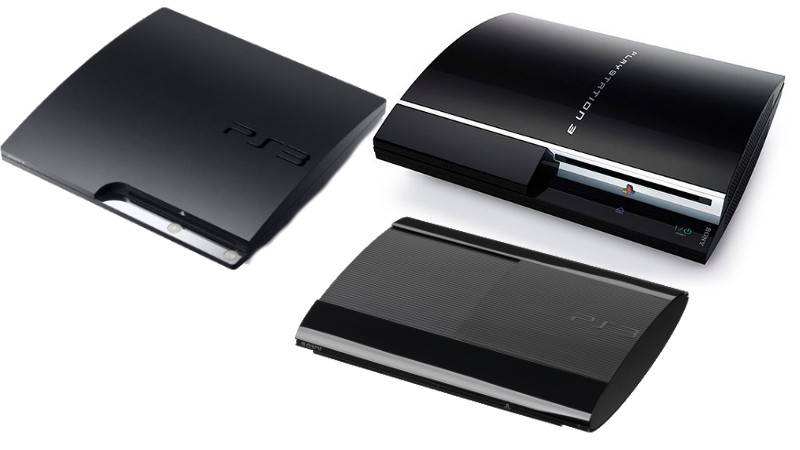
PlayStation 3
The original PlayStation 3 that launched in 2006 was a heavy, massive machine. It featured a 20 or 60 GB hard drive, PlayStation and PlayStation 2 backward compatibility, a Blu-Ray player, and the Sixaxis controller. In later versions, Sony introduced even more hard drive sizes up to 160 GB, but eliminated the ability to play PlayStation 2 games (a move that made PS2-compatible models skyrocket in value). Starting in 2008, Sony replaced the Sixaxis controller with the weightier Dualshock 3, which added vibration support. In 2009, Sony released the PlayStation 3 Slim. The Slim brought the PS3 down to a more normal console size, and added hard drive space, reaching as high as 320 GB. In addition, the PS3 Slim consumed less power and removed the main power switch from the original PS3 models. Three years later in 2012, Sony redesigned the PS3 one last time with the PlayStation 3 Super Slim. As the name implies, this model lowered the profile of the system even further. It also pushed the upper reaches of the hard drive to 500 GB to accommodate the increased emphasis on digital content.

Nintendo Wii
Of the three consoles from last generation, Nintendo's Wii went through the fewest hardware revisions. Launching in 2006, the system featured 512 MB of internal storage, an SD card slot to expand on storage, GameCube backward compatibility, and slots for GameCube controllers and memory units. In 2009, Nintendo released the Wii MotionPlus accessory, which attaches to the bottom of the standard Wii Remote to improve the motion tracking of the controller. In 2010, Nintendo released Wii Remotes that already had the MotionPlus built in. In 2011, Nintendo put out the Wii Family Edition, which decreased the size and removed all GameCube support. 2013 saw the release of perhaps the most puzzling redesign, the Wii Mini. This final redesign carried over the removal of any GameCube support from the Wii Family Edition, but also eliminated several ports, any online functionality, and the SD card slot. It also dropped the number of USB ports from two to one.
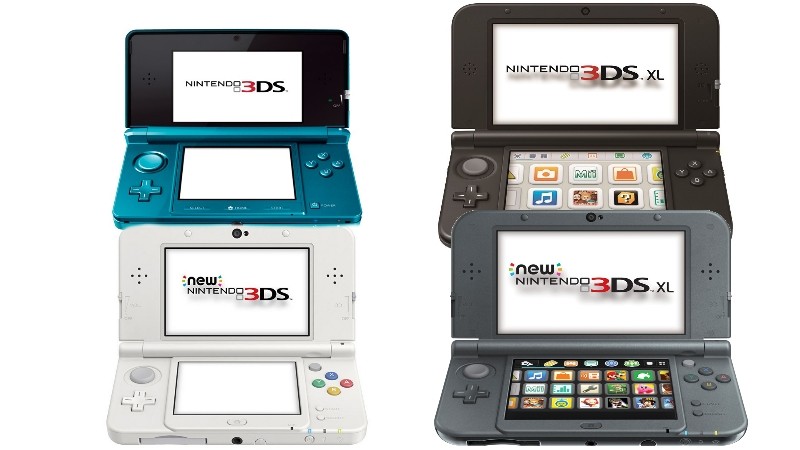
Nintendo 3DS
Just like its previous handhelds, Nintendo has revised the 3DS multiple times. The original 3DS launched in 2011, but its small form factor caused many with larger hands to have cramps during long gameplay sessions. A year and a half later in 2012, Nintendo began selling a larger model with a bigger screen alongside the original 3DS called the 3DS XL. In 2013, the company introduced an inexpensive entry model called the 2DS, which did away with the clamshell design, as well as the system's 3D capabilities.
The major redesign of the 3DS came in 2015 with the New Nintendo 3DS XL, and later that year, the standard New Nintendo 3DS. These "New" models included a more powerful processor and increased RAM, while also adding a second control stick in the form of a nub on the right side, two additional shoulder buttons, face detection capabilities to improve 3D, and a built-in NFC reader for Amiibo figures. The New 3DS models also traded SD cards for MicroSD storage, and featured minor cosmetic changes. In addition, the standard model of the New 3DS used interchangeable faceplates, enabling customization options. While the examples are scarce, some games either require or recommend that you use the New 3DS to play.

PlayStation Vita
Sony's underappreciated 2012 handheld only underwent one true revision. 2014's PS Vita Slim was a thinner, lighter model that replaced the original's OLED screen with a less expensive LCD screen. The Slim also gained a slightly longer battery life, as well as 1 GB of internal storage that could not be used in conjunction with Vita's external memory cards. One big addition was a micro USB port that could be used to charge the system using any micro USB cable. While that was the only system revision to the Vita, Sony also released PlayStation TV in 2014, which allowed you to play select Vita games on the television using a PlayStation 3 or PlayStation 4 controller. PlayStation TV is also compatible with PlayStation 4's Remote Play functionality, as well as Sony's PlayStation Now streaming games service, allowing users to play other games on the system.
What were your favorite/least favorite console revisions? Sound off in the comments below!

Get the Game Informer Print Edition!
Explore your favorite games in premium print format, delivered to your door.
- 10 issues per year
- Only $4.80 per issue
- Full digital magazine archive access
- Since 1991









